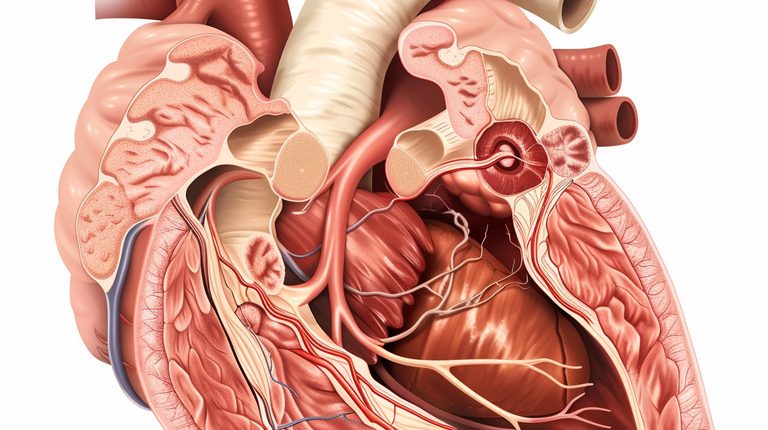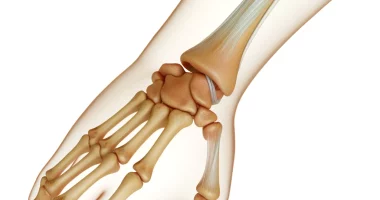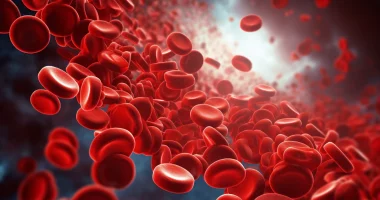Aortic valve insufficiency
About the disease
Aortic valve insufficiency is a defect in which the heart valve flaps do not close completely. It leads to backflow of blood from the aorta into the left ventricle (regurgitation) between myocardial contractions.
Aortic insufficiency, along with pathologies of the mitral valve of the heart, is among the most frequent diseases in cardiology. Each year, the number of patients who experience aortic valve insufficiency increases by 20%. In men, the disease occurs more often than in women, there is no relationship between the detection of aortic regurgitation and age.
When the valve leaflets are not closed, part of the blood flows back into the left ventricle when the heart muscle relaxes. As a result, the walls of the ventricle are stretched due to high load, and disturbances in the structure of the myocardium lead to functional failure of the organ.
Types of aortic insufficiency
Classification of aortic insufficiency by severity includes three grades:
- Mild: blood backflow is less than 25%, and volume is less than 30 ml.
- Moderate: backflow is 25-64%, volume 30-49 ml.
- Severe: backflow of more than 65%, volume of more than 50 ml.
Depending on the hemodynamic abnormalities present, five stages are distinguished:
- initial, asymptomatic, compensated;
- latent, causing rapid physical fatigue;
- subcompensated, accompanied by chest pain on exertion;
- decompensated, accompanied by dyspnea;
- terminal, spreading to other organs.
The disease’s progression rate depends on the cause of development and associated pathologies.
Symptoms of aortic valve insufficiency
The chronic form of the disease can be asymptomatic for a long time. The list of complaints of patients suffering from pronounced aortic insufficiency may include:
- shortness of breath on exertion and at rest;
- chest pain;
Acute aortic regurgitation leads to the following deadly complications:
- heart failure;
- cardiogenic shock;
- pulmonary edema;
- ventricular arrhythmia.
In this case, the patient requires urgent medical attention.
Causes of aortic valve insufficiency
Aortic insufficiency can develop as a result of:
- endocarditis is an infectious inflammation of the myocardium;
- atherosclerosis – cholesterol damage to the artery walls;
- abnormalities of the heart muscle;
- autoimmune diseases;
- heart trauma
- rheumatic disease.
Infections and trauma usually provoke an acute course of aortic insufficiency, other factors cause a chronic course of the disease.
In 80% of cases, the disease is associated with rheumatism. Congenital forms of aortic valve insufficiency are rare and may be associated with infections experienced during pregnancy or exposure to radiation.
Diagnosis of aortic valve insufficiency
At the initial appointment, the cardiologist performs a physical examination, which includes:
- palpation of the arteries;
- auscultation of the heart;
- blood pressure measurement.
Signs of aortic insufficiency include decreased diastolic pressure with normal or slightly increased systolic pressure, high-frequency heart murmurs, and increased vascular pulsation. In severe aortic regurgitation, the heart murmurs become low-frequency, rumbling.
A diagnosis is determined after examination, data collection, and review of the patient’s disease history.
- Echocardiography is the primary method of examination of the heart, which allows you to accurately assess the severity of the disease and the prognosis of its course. The doctor determines the structure of the valve and aortic root and the state of the left ventricle of the heart.
- Magnetic resonance imaging – imaging of the heart to assess its size, contractile function, and severity of aortic insufficiency. Usually, a tomography scan is prescribed if the Echo was not informative enough.
- Computed tomography is indicated if MRI is not indicated, but visualization of the aortic valve and aortic root is required to determine treatment strategy.
- Electrocardiography (ECG) is necessary to detect abnormalities in heart rhythm, conduction, and left ventricular hypertrophy.
- Angiography – hemodynamic measurements, assessment of pressure in the left ventricle of the heart, visualization of the vascular bed using X-rays.
Treatment
The primary method of treatment for aortic valve insufficiency is surgical intervention. However, the peculiarities of the course of the disease, the patient’s condition, and anamnesis do not always allow them to resort to surgery immediately. In this case, medications are first used to improve the patient’s well-being and prepare the patient for surgery.
Conservative treatment
Medications are primarily aimed at reducing and stabilizing blood pressure values. Hypotensive drugs slow down the progression of aortic insufficiency and improve the patient’s quality of life.
After the surgical intervention for valve implantation, drug treatment continues: the patient is prescribed drugs for life to prevent thrombosis and the development of vascular atherosclerosis.
Surgical treatment
Surgery is indicated when the diagnosis of aortic valve insufficiency reveals:
- blood regurgitation in the heart is more than 50%;
- decreased contractility of the left ventricle;
- severe clinical course: severe chest pain, fainting.
The primary surgical treatment method is artificial (mechanical, biological) valve replacement. The intervention is performed by sternal dissection (sternotomy) or endovascularly through the femoral or subclavian artery. After insertion of the prosthesis, a constant intake of anticoagulants is required, but the new valve installed will function for a long time: 10 years after the operation, more than 80% of patients do not need to be replaced.
The second method of surgical treatment is valve reconstruction. It is performed using its tissues and does not require lifelong intake of blood thinners, but the formed valve has a limited life span.
All these treatment options are available in more than 650 hospitals worldwide (https://doctor.global/results/diseases/aortic-valve-insufficiency). For example, aortic valve replacement can be done in 29 clinics across Turkey for an approximate price of $8.4 K (https://doctor.global/results/asia/turkey/all-cities/all-specializations/procedures/aortic-valve-replacement-avr).
Prevention of aortic valve insufficiency
Aortic valve insufficiency is a polymorphic disease, so a healthy lifestyle is needed to reduce the risk of developing it:
- timely elimination of foci of chronic infection;
- prevention of viral and bacterial inflammation;
- balanced diet with limited trans fats;
- moderate and regular physical activity.
At least once a year, they should be examined by a general practitioner in the presence of chronic diseases, heart defects, atherosclerosis, or hypertension by a cardiologist.
Rehabilitation
After aortic valve implantation, patients are advised to follow the requirements of the recovery period for three months. Only after 12-14 weeks, they can return to work if they feel well.
The most effective way of rehabilitation is for the patient to stay in a sanatorium, with a gradual increase in physical activity under the supervision of specialists. If a person stays at home after discharge from the hospital, they should be examined to assess the condition:
- two to four weeks after surgery;
- in six months;
- a year from surgery;
- once a year.
Regular dispensary monitoring requires examinations: Echo, ECG, chest X-ray, and clinical and biochemical blood tests. The patient is recommended therapeutic exercise, breathing exercises, as well as psychological assistance to prevent anxiety and dysphoric disorders.



